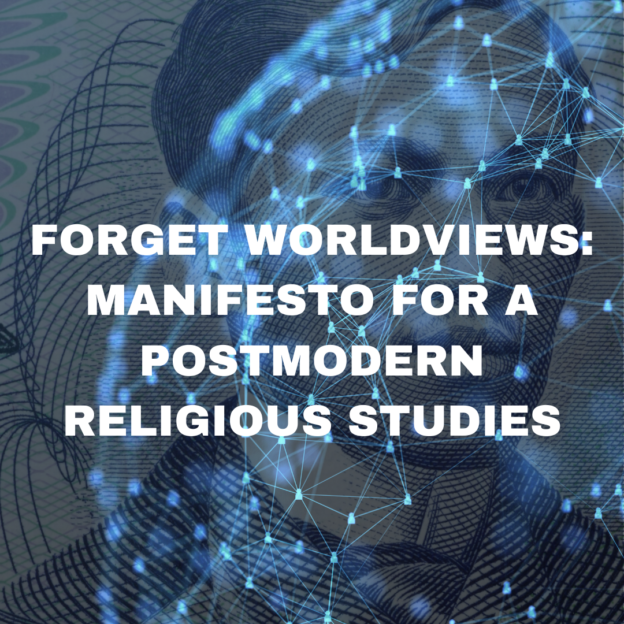The point of departure for this post is that the much-touted Worldviews paradigm (REC 2018) — in much the same fashion as the World Religion Paradigm — conceives of religions as substances and as containers to which can then be ascribed traits and qualities, into which can be poured particular collections of beliefs, practices, founders, texts and institutions. Such conceptions lead to stereotypes, clichés and essentialism, and hinder the cultivation of critical religious literacy.
An alternative is required and, as such, I propose conceiving religions broadly in terms of relations rather than as substances or containers, and specifically as assemblages (Deleuze and Guattari 2014). An assemblage is a multiplicity of interconnected things. What would this approach mean for the study of Christianity?
In 1999–2000 I conducted fieldwork around Mount Banahaw in the Philippines. I was interested in religious groups and churches that had emerged amidst (i) complex historical encounters between Catholic and Protestant missionary activity in the context of Empire and revolution; (ii) gendered Southeast Asian conceptions of power and healing; and (iii), more recent post-colonial, nationalist, urban and diasporic imaginaries and networks.
Asymmetric interactions in Banahaw generated a religion called Rizalism, which was characterised by vernacular Biblical interpretation fused with local ontology, improvised monumental architecture, the configuration of José Rizal — a 19th century Filipino doctor and novelist executed by the Spanish colonial regime in 1896 and later elevated to the status of national hero — into a messianic personage and, with regard to the largest of the Rizalist churches in Banahaw the Ciudad Mistica de Dios — the building of a “city” that challenged the urban imaginaries of the Spanish and American colonial projects and the Philippines’ own urban modernity. The Rizalism assemblage, then, drew and related together a number of previously distinct elements to constitute a new religious formation.
A further example from the Philippines concerns El Shaddai, which is neither Catholic nor Protestant and is both local and global. El Shaddai is a Catholic charismatic-Pentecostal group that, through mass rallies, radio and television programmes, digital media and a mega-church complex, links various locales across the archipelago with Manila and numerous Pinoy diasporas in Asia, Europe and the Americas. If traditional Catholic religiosity in the Philippines is centred on the defined space of the parish church and mediated through the priest, El Shaddai generates a mediatised transmission chain that links together domestic spaces, virtual spaces and numerous locales with rallies and worship in Manila, by broadcasting the latter live on various media platforms. The El Shaddai assemblage, then, also combines, relates and connects a host of previously distinct elements and gives them a new form.
An ethnographic perspective on El Shaddai and the Rizalists of Mount Banahaw opens out the lived and improvised, do-it-yourself dimensions of these assemblages. Both have been generated through everyday combinations of previously distinct elements. An astronomer’s perspective makes visible how each of these assemblages has coalesced as a result of a series of asymmetrical, historical “generative interactions” (Tremlett 2021) between missionaries, technologies, landscapes and more. Combining these perspectives reveals complex processes of combination-relation-articulation by which different things arrive in each other’s orbit to become an assemblage and processes of disintegration-separation wherein those orbits are disturbed and the elements pulled apart, perhaps to decompose altogether, or to fall into the orbit of something else.
A postmodern Religious Studies interested in Christianity would begin with such groups because they demonstrate the existence not of a distinct, single worldview called Christianity but rather a diversity of christianities assembled across multiple scales of the social (local, national and global). Critical religious literacy does not reside in being able to reproduce the ideologically policed borders of Christianity as a single tradition, but in being able to analyse its interactions and relations with the different scales and dimensions of the social, using multiple lenses (see Moore 2010).
This post was originally published on Socrel’s blog at Medium: https://socrel.medium.com/forget-worldviews-manifesto-for-a-postmodern-religious-studies-85fbcf061b74. Reposted with permission and gratitude.
References
Deleuze, G. and Guattari, F. (2014) A Thousand Plateaus: Capitalism and Schizophrenia, trans. B. Massumi, London: Bloomsbury.
Moore, D. L. (2010) Guidelines for Teaching about Religion in K — 12 Public Schools in the United States, Atlanta, GA: American Academy of Religion.
Religious Education Council. (2018) Religion and Worldviews: The Way Forward, London: REC.
Tremlett, P-F. (2021) Towards a New Theory of Religion and Social Change: Sovereignties and Disruptions, London: Bloomsbury.

